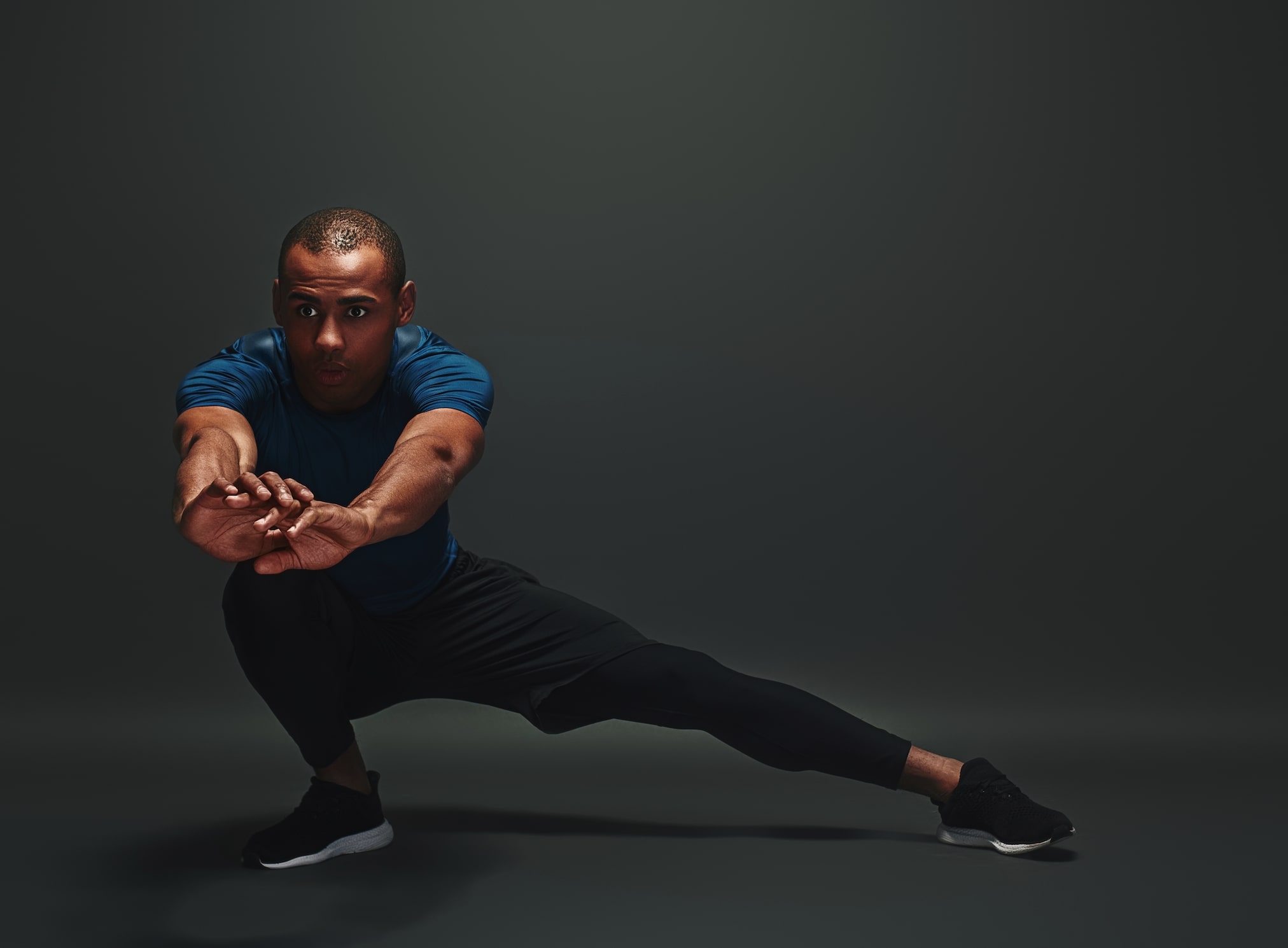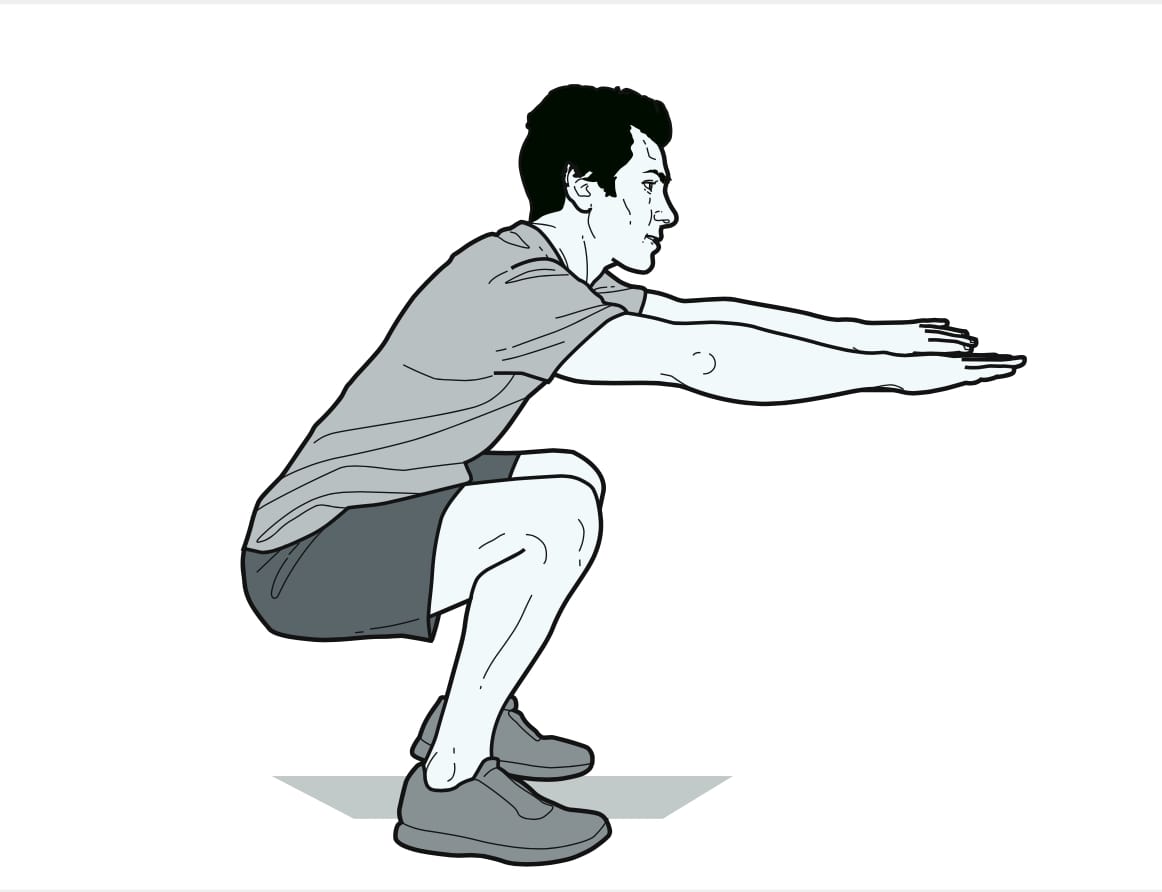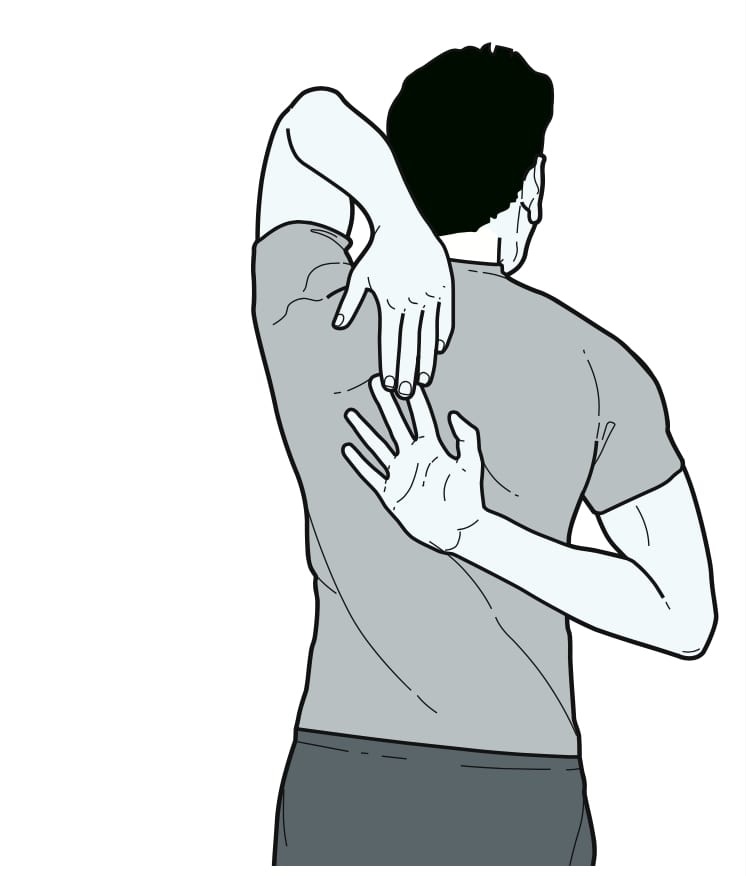Products You May Like
Time is precious. You’ve made it to the gym with an hour to nail your workout before rushing back to work. As always, you’ve barely got time to work on mobility – it’s all about getting the reps in.
Circle your arms, touch your toes – that should do it, right? After all, you’re not injured, and you don’t have time for that optional stuff. Time to hit the squat rack.
OK, so you may not be injured, but as long as you neglect your mobility, you won’t enjoy a full range of motion. And if that’s compromised, then so will you form be. And poor form leads to a less effective workout. Get the picture?
So even though mobility exercises may sound like a chore, they’re essential for helping you reach your fitness potential. And the older you get, the more important they become. So if you’re looking to build your body to stand the test of time, you need to work on mobility.
RELATED CONTENT:
Why you need to work on mobility
Dr Kelly Starrett founded the site MobilityWOD – now The Ready State – and has written two New York Times bestsellers on the subject. He believes men don’t work on mobility enough because it hasn’t been communicated in the right way.
Reflecting on his own time as a national athlete, when a physical therapy intern suggested he was missing full shoulder mobility, Dr Starrett says:
“I was thinking, Who cares? I’m smashing it, I’m a great athlete and I don’t have shoulder pain. That’s what I’d been taught: to wait around until something hurts. Instead of understanding that I wasn’t being as effective as I could be and that by not having a full range of motion, I was leaving wattage and poundage on the table.”
So, while you might be ticking along nicely and making progress, regular mobility work will improve your lifting and make your time in the gym even more effective.
Mobility for muscle gain
A meta-analysis, published in the Scandinavian Journal of Medicine and Science in Sports, found clear evidence that full range of motion training led to significantly greater muscle adaptation and size increase.
“Whatever your training goals are,” says Jarlo Ilano, physical therapist and trainer with GMB Fitness, “whether you’re trying to gain muscle or improve body composition, if you can’t achieve certain positions that make the exercise optimal, you won’t be getting the most out of it.”
So, working on and improving mobility is about maximising your output and the results from your time in the gym. If poor mobility in your shoulder prevents you from performing your overhead press correctly, you will not be getting the most from that particular exercise. You should think of your mobility work as a power-up for your strength and conditioning work.
“I want you to have more ankle mobility, so you can push harder into the ground during your deadlift,” says Dr Starrett. “When we can return your range of motion and your control of that range, then we can return your power and your potential to get stronger.”
Mobility and injury prevention
There is also evidence to support the fact that mobility can prevent injury, but there is still some debate among fitness professionals, so it would be too simplistic to apply this as a rule across the board.
But you can be sure that in sport-specific cases, mobility will help you. For example, if you play football, greater mobility of your hips and ankles should lead to less chance of injury.
A study carried out over two seasons, and published in the Journal of Strength and Conditioning Research, showed that using mobility training led to a significant decrease in muscle injuries (strains and tears).
In the weights room, mobility training will help to prevent injuries further down the line, as Ilano explains:
“If you have an existing mobility restriction and you continue lifting, you are cementing that issue. Things don’t tend to improve; things [muscles, tendons and joints] tend to get tighter. It’s an accumulation over time.”
In a similar way, Dr Starrett suggests that mobility training and greater awareness of our movement can help us:
“Giving yourself access to greater range of motion puts you in a position that can generate more force, and that is potentially injury-protective. Mobility is the benchmark of durability.”
RELATED: 10 Best Mobility Exercises For Men Who Lift
How to train for mobility
Dr Starrett is a strong believer that you should be maximising your time in the gym. “If you’re pressing overhead today,” he says, “let’s work on your overhead position, let’s address the tissues that may be restricting you.”
He recommends that you use a dynamic mobility warm-up specific to the area of the body you are training during that session.
It’s not about addressing whole-body mobility each time you get to the gym. Instead, it’s about applying the right mobility warm-up for the training session you have planned for that day. That way you are maximising the precious time you have in the gym, to ensure you get the most from it.
When it comes to foam rolling, to release tension and improve tissue health, save that for later in the day.
“We have far better adherence with our clients if they are doing foam rolling at the end of the day,” says Dr Starrett. “Perhaps they are watching TV and they can sit on the floor with their foam roller, and then think, What’s sore today? They can then spend ten minutes working on that.
“This way, we found people had healthier tissues, less pain and fell asleep more quickly – while keeping their gym time intact.”
Unsure whether you’re mobile or not? Try these mobility tests to see where you might have issues in reaching full range of motion
1. Couch Stretch
The is a great stretch to see where your hip extension and knee flexion weak points are.
- Bend your left knee and place your shin along the back cushion of a couch (or a chair) with your toes pointed upward.
- Keep your left thigh in line with your body.
- Place your right foot in front, aligning your knee above your ankle.
- Elongate your spine and engage your core and glutes.
- Keep your hips square.
- Hold for at least 45 seconds, then switch sides.
2. Ten-Minute Squat Test
Dr Kelly Starrett claims this is a posture we should all be aiming towards being able to achieve. It requires good mobility at the hips, knees, ankles and the lumbar spine.
- Stand with your feet parallel, hip-width apart and toes facing out slightly.
- Hinge at the hips to squat down as deep as you can.
- Keep your back as straight as possible.
- Hold in this bottom position for ten minutes or as near as you can manage.
3. Apley Scratch Test
This is a test used by many physios to diagnose shoulder mobility issues. It tests internal and external rotation, as well as adduction and abduction at the shoulder joint.
- Reach your right arm above your head, with the palm facing forward.
- Bend at the elbow and place your right palm on your left shoulder blade. If possible, see if you can place the hand between your two shoulder blades.
- Reach your left arm behind you and with palm facing inwards.
- Bend at the elbow and place the back of your left hand on your right shoulder blade. See if you can place the hand between your two shoulder blades.
- Try to touch the fingers of your right hand and left hand together.
Words: Simon Sharman



